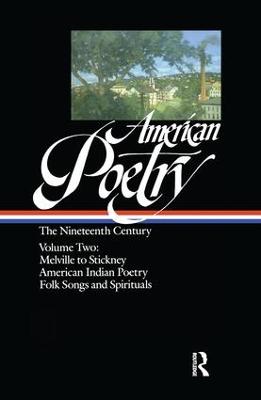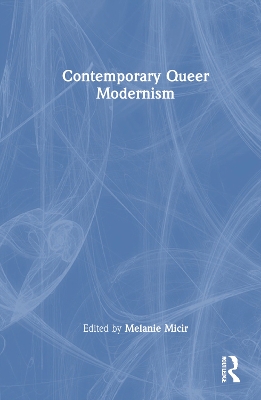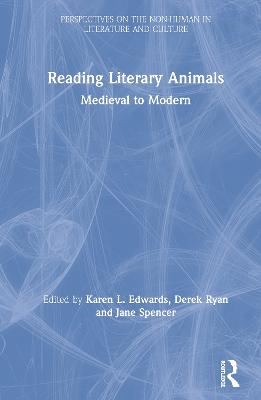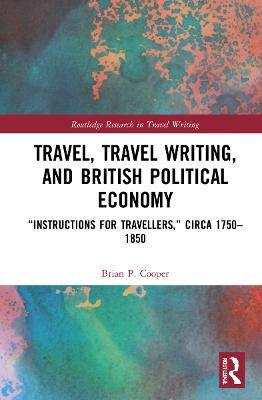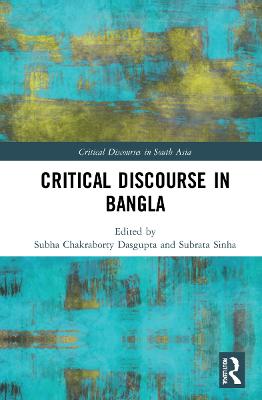Reading Literary Animals
 -10%
portes grátis
-10%
portes grátis
Reading Literary Animals
Medieval to Modern
Spencer, Jane; Ryan, Derek; Edwards, Karen L.
Taylor & Francis Ltd
09/2019
290
Mole
Inglês
9781138093850
15 a 20 dias
403
Descrição não disponível.
Contents
Introduction
Karen L. Edwards, Derek Ryan, Jane Spencer
Part I Testing Metaphor1. Entities in the World: Intertextuality in Medieval Bestiaries and Fables
Carolynn Van Dyke
2. Una's 'Milkewhite Lambe'
Karen L. Edwards
3. Behn's Beasts: Aesop's Fables and Surinam's Wildlife in Oroonoko
Jane Spencer
Part II Plotting Agency
4. Shakespeare's Animal Parts
Philip Armstrong
5. Exit Pursuing a Human: Performing Animals on the Early Modern Stage
Andy Kesson
6. Collaborative Agency: Animals in Hardy's Rural Novels
Virginia Richter
Part III Inscribing Voice
7. Counting Animals: Nonhuman Voices in Lear and Carroll
Kaori Nagai
8. 'What am I?': Locating the Indeterminate Voices of Ted Hughes's Animal Poems
Carrie Smith
9. "Thou, Spotted Eros": Love Poetry, Taxonomy, and the Erotics of Adamic Naming
Matthew Margini
Part IV Exploiting Bodies10. The Hunting of the Hare: Female Virtue and Companionate Marriage in Henry Fielding's Joseph Andrews and Tom Jones
Adela Ramos
11. "Filth and Fat and Blood and Foam": Animal Capital, Commodified Meat, and the "Human" in Great Expectations
Jennifer McDonell
12. Fiction, Fashion, and the Victorian Fur Seal Hunt
John Miller
Part V Loving Dogs
13. Animal Intimacies: Cross-Species Affect and the Lapdog Lyric
Laura Brown
14. Anthropomorphism, Personification and Humanization in William Wordsworth's Dog Poems
James P. Carson
15. "Was it Flush, or was it Pan?": Virginia Woolf, Ethel Smyth, and Canine Biography
Derek Ryan
Introduction
Karen L. Edwards, Derek Ryan, Jane Spencer
Part I Testing Metaphor1. Entities in the World: Intertextuality in Medieval Bestiaries and Fables
Carolynn Van Dyke
2. Una's 'Milkewhite Lambe'
Karen L. Edwards
3. Behn's Beasts: Aesop's Fables and Surinam's Wildlife in Oroonoko
Jane Spencer
Part II Plotting Agency
4. Shakespeare's Animal Parts
Philip Armstrong
5. Exit Pursuing a Human: Performing Animals on the Early Modern Stage
Andy Kesson
6. Collaborative Agency: Animals in Hardy's Rural Novels
Virginia Richter
Part III Inscribing Voice
7. Counting Animals: Nonhuman Voices in Lear and Carroll
Kaori Nagai
8. 'What am I?': Locating the Indeterminate Voices of Ted Hughes's Animal Poems
Carrie Smith
9. "Thou, Spotted Eros": Love Poetry, Taxonomy, and the Erotics of Adamic Naming
Matthew Margini
Part IV Exploiting Bodies10. The Hunting of the Hare: Female Virtue and Companionate Marriage in Henry Fielding's Joseph Andrews and Tom Jones
Adela Ramos
11. "Filth and Fat and Blood and Foam": Animal Capital, Commodified Meat, and the "Human" in Great Expectations
Jennifer McDonell
12. Fiction, Fashion, and the Victorian Fur Seal Hunt
John Miller
Part V Loving Dogs
13. Animal Intimacies: Cross-Species Affect and the Lapdog Lyric
Laura Brown
14. Anthropomorphism, Personification and Humanization in William Wordsworth's Dog Poems
James P. Carson
15. "Was it Flush, or was it Pan?": Virginia Woolf, Ethel Smyth, and Canine Biography
Derek Ryan
Este título pertence ao(s) assunto(s) indicados(s). Para ver outros títulos clique no assunto desejado.
Young Man;Anglophone literature;Wild Ducks;history of animals in literature;Moor Fowl;animal studies;Animal Kingdom;ethics;Steam Ship;humanity;posthumanist;Literary Animal Studies;non-human;Mouse's Remembrance;culture;Aberdeen Bestiary;human culture;White Seal;language;Sealskin Jacket;linguistics;Golden Lion Tamarin;pets;Animal Vehicle;creatures;Seventeenth Century Natural History;question of the animal;Redshouldered Hawk;voice for animals;Hind Flipper;transformation;Northern Fur Seals;anglophone writing;Nonsense Texts;animal agency;Dullborough Town;early modern literature;Adamic Naming;animals in poetry;Lion Tamarin;beasts;Madding Crowd;humanization;Panthera Onca;anthromorphism;Seal Hunt;Wordsworth;Clever Hans Effect;personification;chidlren;Kipling;Lewis Carroll;Edward Lear;Shakespeare;tragedy;commodification;nature;life;Smithfield Markets;Hardy;agriculture;medieval literature;18th century literature;love;taxonomy;Virginia Woolf;Ethel Smyth;Two Gentlemen of Verona;Alexander Pope;birdsong;natural history;Victorian literatire;Anthony and Cleopatra;Macbeth;symbolism;poststructuralist;House of Fame;Chaucer;Moral Fables;The Parliament of Fowls;novelty;Joseph Andrews;Tom Jones;Henry Fielding;Flush;A Story for Dog Lovers;Middle Ages;human-animal relations;animality
Contents
Introduction
Karen L. Edwards, Derek Ryan, Jane Spencer
Part I Testing Metaphor1. Entities in the World: Intertextuality in Medieval Bestiaries and Fables
Carolynn Van Dyke
2. Una's 'Milkewhite Lambe'
Karen L. Edwards
3. Behn's Beasts: Aesop's Fables and Surinam's Wildlife in Oroonoko
Jane Spencer
Part II Plotting Agency
4. Shakespeare's Animal Parts
Philip Armstrong
5. Exit Pursuing a Human: Performing Animals on the Early Modern Stage
Andy Kesson
6. Collaborative Agency: Animals in Hardy's Rural Novels
Virginia Richter
Part III Inscribing Voice
7. Counting Animals: Nonhuman Voices in Lear and Carroll
Kaori Nagai
8. 'What am I?': Locating the Indeterminate Voices of Ted Hughes's Animal Poems
Carrie Smith
9. "Thou, Spotted Eros": Love Poetry, Taxonomy, and the Erotics of Adamic Naming
Matthew Margini
Part IV Exploiting Bodies10. The Hunting of the Hare: Female Virtue and Companionate Marriage in Henry Fielding's Joseph Andrews and Tom Jones
Adela Ramos
11. "Filth and Fat and Blood and Foam": Animal Capital, Commodified Meat, and the "Human" in Great Expectations
Jennifer McDonell
12. Fiction, Fashion, and the Victorian Fur Seal Hunt
John Miller
Part V Loving Dogs
13. Animal Intimacies: Cross-Species Affect and the Lapdog Lyric
Laura Brown
14. Anthropomorphism, Personification and Humanization in William Wordsworth's Dog Poems
James P. Carson
15. "Was it Flush, or was it Pan?": Virginia Woolf, Ethel Smyth, and Canine Biography
Derek Ryan
Introduction
Karen L. Edwards, Derek Ryan, Jane Spencer
Part I Testing Metaphor1. Entities in the World: Intertextuality in Medieval Bestiaries and Fables
Carolynn Van Dyke
2. Una's 'Milkewhite Lambe'
Karen L. Edwards
3. Behn's Beasts: Aesop's Fables and Surinam's Wildlife in Oroonoko
Jane Spencer
Part II Plotting Agency
4. Shakespeare's Animal Parts
Philip Armstrong
5. Exit Pursuing a Human: Performing Animals on the Early Modern Stage
Andy Kesson
6. Collaborative Agency: Animals in Hardy's Rural Novels
Virginia Richter
Part III Inscribing Voice
7. Counting Animals: Nonhuman Voices in Lear and Carroll
Kaori Nagai
8. 'What am I?': Locating the Indeterminate Voices of Ted Hughes's Animal Poems
Carrie Smith
9. "Thou, Spotted Eros": Love Poetry, Taxonomy, and the Erotics of Adamic Naming
Matthew Margini
Part IV Exploiting Bodies10. The Hunting of the Hare: Female Virtue and Companionate Marriage in Henry Fielding's Joseph Andrews and Tom Jones
Adela Ramos
11. "Filth and Fat and Blood and Foam": Animal Capital, Commodified Meat, and the "Human" in Great Expectations
Jennifer McDonell
12. Fiction, Fashion, and the Victorian Fur Seal Hunt
John Miller
Part V Loving Dogs
13. Animal Intimacies: Cross-Species Affect and the Lapdog Lyric
Laura Brown
14. Anthropomorphism, Personification and Humanization in William Wordsworth's Dog Poems
James P. Carson
15. "Was it Flush, or was it Pan?": Virginia Woolf, Ethel Smyth, and Canine Biography
Derek Ryan
Este título pertence ao(s) assunto(s) indicados(s). Para ver outros títulos clique no assunto desejado.
Young Man;Anglophone literature;Wild Ducks;history of animals in literature;Moor Fowl;animal studies;Animal Kingdom;ethics;Steam Ship;humanity;posthumanist;Literary Animal Studies;non-human;Mouse's Remembrance;culture;Aberdeen Bestiary;human culture;White Seal;language;Sealskin Jacket;linguistics;Golden Lion Tamarin;pets;Animal Vehicle;creatures;Seventeenth Century Natural History;question of the animal;Redshouldered Hawk;voice for animals;Hind Flipper;transformation;Northern Fur Seals;anglophone writing;Nonsense Texts;animal agency;Dullborough Town;early modern literature;Adamic Naming;animals in poetry;Lion Tamarin;beasts;Madding Crowd;humanization;Panthera Onca;anthromorphism;Seal Hunt;Wordsworth;Clever Hans Effect;personification;chidlren;Kipling;Lewis Carroll;Edward Lear;Shakespeare;tragedy;commodification;nature;life;Smithfield Markets;Hardy;agriculture;medieval literature;18th century literature;love;taxonomy;Virginia Woolf;Ethel Smyth;Two Gentlemen of Verona;Alexander Pope;birdsong;natural history;Victorian literatire;Anthony and Cleopatra;Macbeth;symbolism;poststructuralist;House of Fame;Chaucer;Moral Fables;The Parliament of Fowls;novelty;Joseph Andrews;Tom Jones;Henry Fielding;Flush;A Story for Dog Lovers;Middle Ages;human-animal relations;animality

